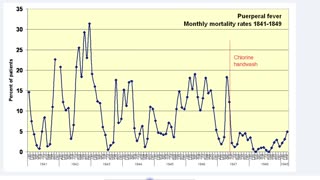Premium Only Content

Reducing sperm motility
Recent decline in sperm motility among donor candidates at a sperm bank in Denmark
https://pubmed.ncbi.nlm.nih.gov/38834185/
Lassen E, Pacey A, Skytte AB, Montgomerie R. Recent decline in sperm motility among donor candidates at a sperm bank in Denmark. Hum Reprod. 2024 Jun 4
(Denmake, Canada, UK)
Abstract
Denmark, 2017 - 2022
Variation in semen quality among men applying to be sperm donors
Summary answer
The motile sperm concentration and total motile sperm count (TMSC) in ejaculates,
both measures of sperm quality,
declined by as much as 22% from 2019 to 2022.
What is known already
Questions remain about whether human semen quality has declined in recent years.
Resolution of this issue has important implications for human fertility
Study design, size, duration
Semen quality of ejaculates previously collected from 2017 to 2022
Sperm bank locations, four cities in Denmark
6,758 donor candidates
Between 18 and 45 years old
(to determine whether their sperm quality met a minimum criterion for them to be accepted as sperm donors)
Participants/materials, setting, methods
All ejaculates were analyzed within 1 hour of production.
Computer-assisted semen analysis
Age, site, temperature.
2017 to 2019
Semen volume, sperm concentration, and total sperm count increased by 2-12%
2019 to 2022
Motile sperm concentration, down 16%
Total motile sperm count, down 22%
2019
Concentration of motile sperm, 18.4 million/ml
Total motile sperm count, 61.4 million per ejaculate
2022
Concentration of motile sperm, 15.5 million/ml
Total motile sperm count, 48.1 million per ejaculate
Limitations, reasons for caution
We cannot determine from the available data the causes of the decline in semen quality from 2019 to 2022.
Our results have implications for human fertility and the recruitment of sperm donors for medically assisted reproduction,
where motile sperm concentration is an essential selection criterion because it influences fertility.
We suggest that gathering health and lifestyle data on donor candidates at sperm banks might help to identify causal factors for the decline of sperm quality
-
 36:36
36:36
Dr. John Campbell
20 days agoAvoid the Semmelweis Reflex
31.2K186 -
 1:08:13
1:08:13
Trumpet Daily
19 hours ago $3.70 earnedThe Return of 45 - Trumpet Daily | Jan. 20, 2025
4.56K6 -
 1:16:47
1:16:47
BIG NEM
1 day agoWe Interviewed a 40 Year Old VIRGIN
1.59K1 -
 2:54:30
2:54:30
Donald J. Trump
12 hours agoCommander-In-Chief Ball
368K298 -
 DVR
DVR
GOP
1 day agoPresident Trump Speaks at the Commander-In-Chief Ball
202K33 -
 1:45:10
1:45:10
Glenn Greenwald
14 hours agoTrump is Inaugurated & Immediately Issues Executive Orders; Biden Pardons His Family, Liz Cheney, Fauci; Michael Tracey DC Interviews | SYSTEM UPDATE #392
201K198 -
 2:03:43
2:03:43
Kim Iversen
14 hours agoTrump’s Triumphant Return: Breaking Down Trump’s Bold 2025 Agenda | The TikTok Ban Backlash: Who Wins, Who Loses?
131K78 -
 3:45:23
3:45:23
Benny Johnson
14 hours ago🚨 Watch President Trump FREE January 6th Political Prisoners LIVE Right Now | Stadium ROARS
286K320 -
 5:19:30
5:19:30
Donald J. Trump
18 hours agoDonald J. Trump Attends the Presidential Parade
629K447 -
 DVR
DVR
GOP
1 day agoDonald J. Trump Attends the Presidential Parade
392K90